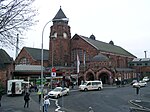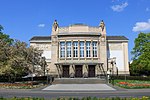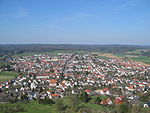Giessen

Giessen, spelled Gießen in German (German pronunciation: [ˈɡiːsn̩] (listen)), is a town in the German federated state (Bundesland) of Hesse, capital of both the district of Giessen and the administrative region of Giessen. The population is approximately 90,000, with roughly 37,000 university students. The name comes from Giezzen, as it was first referred to in 1197, which refers to the position of the town between several rivers, lakes and streams. The largest river in Giessen is the Lahn, which divides the town in two parts (west and east), roughly 50 kilometres (31 miles) north of Frankfurt am Main. Giessen is also home to the University of Giessen. In 1969, the town hosted the ninth Hessentag state festival.
Excerpt from the Wikipedia article Giessen (License: CC BY-SA 3.0, Authors, Images).Giessen
Flutgraben,
Geographical coordinates (GPS) Address Nearby Places Show on map
Geographical coordinates (GPS)
| Latitude | Longitude |
|---|---|
| N 50.583333333333 ° | E 8.6666666666667 ° |
Address
Liebig-Center
Flutgraben
35390
Hesse, Germany
Open on Google Maps











